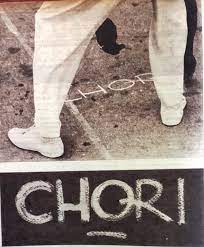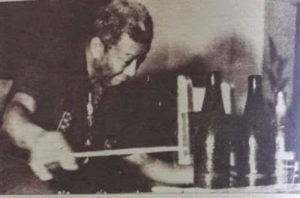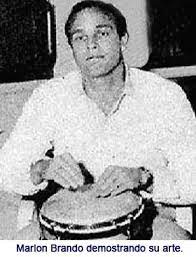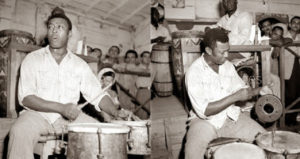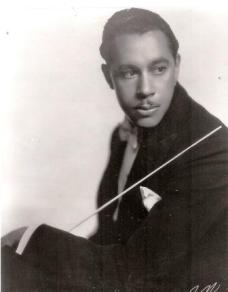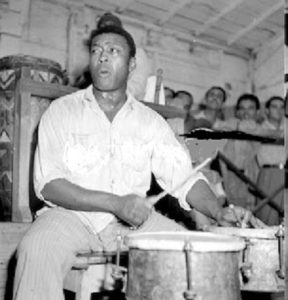“EL CHORI”, A CHARACTER FROM THE OLD HAVANA. “LAS FRITAS DE MARIANAO” TO NOT FORGET. PHOTOS
Those who still remember old Havana from the fifties of the last century may still remember the name ‘Chori’ written in chalk and with very even handwriting in any part of the city. Chori appeared everywhere.
Silvano Shueg Hechevarría, “el Chori”, was born in Santiago de Cuba on January 6, 1900, and stood out as a percussionist, rising to fame in the decade of the 30s and 40s due to his extravagant shows in many nightclubs in La Havana where he played timpani, drums, cowbells and objects such as metal bottles and pans. He composed the popular sones “La choricera” and “Ayaca de corn”, and also appeared in several films in the 1950s such as ‘Un Stranger on the Ladder’ and ‘La Pandilla del Broborno’.
https://youtu.be/P05kOiW9L3s
“EL CHORI” IN THE OLD HAVANA (VIDEOS)
Silvano Schueg, “el chori”, a picturesque character who arrived in Havana in 1927 and began to play timpani, drums, and cowbells in different cabarets on Marianao Beach. He percussed instruments in a very peculiar way and many famous people visited him to see his performance, among them Marlon Brando, a lover of percussion.
HAVANA FROM THE YEARS NEVER FORGOTTEN
Cuban Fifth Avenue is located in the City of Havana, in the Miramar district. It extends from the tunnel, which connects it through a tunnel in the Almendares River, from the end of the Malecón to the Santa Ana River, in the town of Santa Fe.
Right in front of the old Coney Island Park amusement park, a small imitation of the existing one in Brooklyn, there was a group of bars, billiards, and cabarets such as Panchín, Rumba Palace, El Niche, La Choricera, Los Tres Hermanos, Pennsylvania, La Taberna de Pedro, and the Pompilio dance academy.
They were all wooden constructions, with a cement floor and zinc roofs that border on the marginal, and were adjacent to a neighborhood of that condition, “El Romerillo”, but which was visited by all social classes.
https://youtu.be/6DJ1emeAqvs
“EL CHORI” IN THE FILM ‘THE BIG BOODLE’ WITH Errol Flynn (1956)(VIDEOS)
At the Rumba Palace, the timpanist Silvano Shueg Hechevarría played, better known as El Chori, the artist who announced himself alone, and who mounted his shows, with that music taken from timpani, pans, and empty bottles. The oldest reference to El Chori that we find is from 1930 and is related to great names in poetry and universal music.
FEDERICO GARCIA, CALLOWAY AND MARLON BRANDON ARRIVE IN HAVANA
The Chori lacked resources and instruction. He lived on a lot in Old Havana, and he used to eat at La Zaragozana restaurant, which would be a real luxury in modern times. Chori would take music out of any object, with the most unlikely artifacts he would put together a show in front of the public interpreting all kinds of melodies. What is now called a genuine showman.
He sympathized with the small cabarets around Marianao beach, and in one of them he officiated a show that consisted of a kind of caricature of a correctional court; there El Chori, who served as a judge, held a trial every night with the most diverse infractions, misdemeanors, and even crimes, and it was interesting to realize that all that naive apparatus was just a justification for this chorus of a son:
“The choricera is over
Bongo will come.
A chorizo only remains
Bongo will come. ”
Later, Federico García Lorca would arrive, who would be received by the most select of the intelligentsia. There was no night that his excursion did not end in Marianao’s “fritas”. He made requests for sounds and then he tried the keys, and since he had picked up the rhythm and was not doing it badly, the brunettes laughed with pleasure making him great compliments. But in addition, Lorca accompanied them with a full voice and wanted to be the one who sang the verses.
In 1932 the famous American composer George Gershwin arrived in Havana with a group of friends. He was very attracted to the capital’s musical life, particularly Marianao Beach, of which he became a regular in a few days and spoke of the madness that El Chori was before the timpani.
Impacted by his Havana experiences later, Gershwin composed his symphonic piece Cuban Overture, in which he included fragments of the famous Echale Salsita (Ignacio Piñeiro) and El Manisero (Moisés Simons), whose most impressive versions, he would probably hear played on Marianao Beach. by El Chori.
Cab Calloway the first jazzman to perform in Havana. He was hired by the Montmartre cabaret in 1949 and was fascinated by the music of the Chori.
Marlon Brando, who is said to have liked to play tumbadora from New York, arrived in Havana only for three days in 1956, in which the famous actor enrolled in an excursion to the underworld of Marianao Beach to see touch the Chori.
In 1957, a world-famous musician who, perhaps like few others, could appreciate Silvano Shueg’s true worth as an instrumentalist: the famous Puerto Rican timpanist Tito Puente, when recounting his life, did not hide the fascination that being in presence of the mythical Cuban timpanist, nor the repeated occasions on which he came to see him. Puente did not hesitate to describe it as “the never seen, the best.”
HEMINGWAY, BENNY AND “LAS FRITAS DE MARIANAO”
Ernest Hemingway, Marlon Brando, and Errol Flynn frequented those places, seeking in them the most indigenous of Cuban popular music, and that is how they met El Chori, who received a work contract abroad. El Chori, according to his friends, preferred to stay in the Marianao slum instead of collecting applause and recognition abroad as Benny Moré, Rita Montaner, Bola de Nieve, Celia Cruz, Olga Guillot did, just to mention a few illustrious ones, who they were ambassadors of our music on international stages.
Along with these nightclubs, there were dozens of Cuban fries stalls, much better than hamburgers, and the place was known as “Las Fritas de Marianao”. In the background, were numerous brothels and brothels.
Glories of our music such as Benny Moré, Antonio Arcaño, Chano Pozo, Miguelito Valdés, Arsenio Rodríguez, Senén Suárez, Carlos Embale, Tata Güines and, it is said, a very young Juan Formell with Changuito. And also dozens of lesser-known artists such as Evelio Rodríguez, El Trouvador Espirituano, the “sevillanita” Obdulia Breijo or the forgotten transvestite Musmé.
Shortly after the triumph of the revolution, the nightclubs of Marianao were closed by the government and there the traces of Chori are lost. For a time, signs with his name in capital letters continued to appear on the walls of Havana, supposedly by him.
El Chori died in Havana, in April 1974, at the age of 74, without being able to specify the exact day of his death. As far as is known, he never recorded an album: his genius did not interest any of the record companies either before or after, and his image and sound are only preserved in a few filmic moments, which he knew how to extract from whatever percussive element was put in front of him.
Surely, at some point, it will be appreciated what the son and the rumba de cajón owe, to that school of popular musicians, to that essential stage that for Cuban music was Las Fritas de Marianao, and particularly to El Chori, on Fifth Avenue. from Havana.
Marianao Beach now has a gray color. El Chori will no longer be there, the eccentric Chori, with a bizarre outfit, a red scarf and a cross around his neck, who put on a chilling show with practically nothing, just his talent.
“EL CHORI”, UN PERSONAJE DE LA VIEJA HABANA. “LAS FRITAS DE MARIANAO” DE NO OLVIDAR. PHOTOS
Aquellos que todavia recuerdan a la vieja Habana de los años cincuenta del pasado siglo quizas todavia se acuerden escrito con tiza y con letra muy pareja en cualquier parte de la ciudad, el nombre de ‘Chori’. Chori aparecía en todas partes.
Silvano Shueg Hechevarría, “el Chori”, habia nacido en Santiago de Cuba el 6 de enero de 1900 y se destaco como percusionista saltando a la fama en la década de los años 30s y 40s debido a sus extravagantes espectáculos en muchos clubes nocturnos de La Habana donde tocaba timbales, tambores, cencerros y objetos como botellas y sartenes de metal. Compuso los populares sones “La choricera” y “Ayaca de maíz”, y tambien apareció en varias películas en la década de 1950 como ‘Un Extraño en la Escalera’ y ‘La Pandilla del Soborno’.
https://youtu.be/U_s7Dcqqa6k
“EL CHORI” EN LA HABANA (VIDEOS)
Silvano Schueg, “el chori”, un pintoresco personaje que llegó a la Habana en 1927 y comenzó a tocar timbales, tambores y cencerros en distintos cabarets de la Playa de Marianao. Percutía los instrumentos en forma muy peculiar y muchos personajes famosos lo visitaron para ver su actuación, entre ellos Marlon Brando, amante de la percusión.
AQUELLA HABANA DE LOS AÑOS DE LA REPUBLCA PARA NO OLVIDAR
La Quinta Avenida cubana se encuentra en la Ciudad de La Habana, en el reparto Miramar. Se extiende desde el túnel, que la conecta mediante un túnel en el Río Almendares,desde el final del Malecón, hasta el río Santa Ana, en la localidad de Santa Fe.
Justo al frente del antiguo parque de diversiones Coney Island Park, un remedo pequeño del existente en Brooklyn, había un conjunto de bares, billares y cabarets como Panchín, Rumba Palace, El Niche, La Choricera, Los Tres Hermanos, Pennsylvania, La Taberna de Pedro y la academia de baile Pompilio.
Todos eran construcciones de madera, con piso de cemento y techos de zinc y que rozaban con lo marginal, y estaban contiguas a un barrio de esa condición, “El Romerillo”, pero que era visitado por todas las clases sociales.
En el Rumba Palace tocaba el timbalero Silvano Shueg Hechevarría, más conocido por El Chori, el artista que se anunciaba solo, y que montaba sus espectáculos, con aquella música sacada de timbales, sartenes y botellas vacías. La referencia más antigua de El Chori que encontramos es de 1930 y está relacionada con grandes nombres de la poesía y de la música universal.
LLEGAN A LA HABANA FEDERICO GARCIA, CALLOWAY Y MARLON BRANDON
El Chori carecía de recursos y de instrucción. Vivía en un solar de La Habana Vieja, y solía comer en el restaurante La Zaragozana, lo cual sería un verdadero lujo en los tiempos actuales. El Chori le sacaba música a cualquier objeto, con los artefactos más inverosímiles armaba un show frente al público interpretando todo tipo de melodías. Lo que ahora se llama un genuino showman.
Simpatizó con los pequeños cabarets de los alrededores de la playa de Marianao, y en uno de ellos oficiaba un espectáculo que consistía en una especie de caricatura de un juzgado correccional; allí El Chori, que fungía como juez, celebraba un juicio cada noche con las más diversas infracciones, faltas y hasta delitos, y era interesante darse cuenta de que todo aquel aparato tan ingenuo, era solo una justificación para este estribillo de un son:
“Se acabó la choricera
Bongo camará.
Un chorizo sólo queda
Bongo camará.”
Después llegaría Federico García Lorca que sería recibido por lo más selecto de la intelectualidad. No había noche que su excursión no terminase en las “fritas” de Marianao. Hacía peticiones de sones y seguidamente probaba las claves, y como había cogido el ritmo y no lo hacía mal, los morenos reían complacidos haciéndole grandes cumplimientos. Pero además Lorca los acompañaba a plena voz y quería ser él quien cantase las coplas.
En 1932 el célebre compositor norteamericano George Gershwin llegó a La Habana con un grupo de amigos. Se sintió muy atraído por la vida musical capitalina en particular la Playa de Marianao, de la que se hizo asiduo en breves días y hablaba de la locura que era El Chori ante los timbales.
Impactado por sus experiencias habaneras más tarde Gershwin compone su pieza sinfónica Cuban Overture, en la que incluye fragmentos de los famosos Echale Salsita (Ignacio Piñeiro) y El Manisero (Moisés Simons), cuyas versiones más impactantes, probablemente escucharía en la Playa de Marianao tocadas por El Chori.
Cab Calloway el primer jazzman que actuó en La Habana. Vino contratado por el cabaret Montmartre en 1949 y estaba embobado con la música del Chori.
Marlon Brando, de quien dicen que ya desde Nueva York, le gustaba tocar tumbadora, llegó a La Habana sólo por tres días en 1956, en los que el afamado actor se enroló en una excursión a los bajos fondos de la Playa de Marianao para ver tocar al Chori.
En 1957, un músico de fama mundial, y que, quizás como pocos, podía ponderar la real valía de Silvano Shueg como instrumentista: el famoso timbalero puertorriqueño Tito Puente, al hacer el recuento de su vida no ocultó la fascinación que le produjo estar en presencia del mítico timbalero cubano, ni las reiteradas ocasiones en que acudió a verle. Puente no vaciló en calificarlo como “lo nunca visto, lo mejor”.
HEMINGWAY, EL BENNY Y LAS FRITAS DE MARIANAO
Ernest Hemingway, Marlon Brando y Errol Flynn, frecuentaban aquellos sitios, buscando en ellos lo más autóctono de la música popular cubana, y así fue como conocieron a El Chori, quien recibió un contrato de trabajo en el extranjero. El Chori, según sus amigos, prefirió quedarse en el tugurio de Marianao en vez de recoger aplausos y reconocimientos en el exterior como hicieron Benny Moré, Rita Montaner, Bola de Nieve, Celia Cruz, Olga Guillot, por tan sólo mencionar algunos ilustres, que fueron embajadores de nuestra música en los escenarios internacionales.
Junto a esos centros nocturnos había decenas de puestos de fritas cubanas, mucho mejores que la hamburguesa, y el lugar era conocido como “Las Fritas de Marianao”. Al fondo, se encontraban numerosas casas de citas y prostíbulos.
Por estos escenarios de poca monta pasaron glorias de nuestra música como Benny Moré, Antonio Arcaño, Chano Pozo, Miguelito Valdés, Arsenio Rodríguez, Senén Suárez, Carlos Embale, Tata Güines y, se dice, un muy joven Juan Formell con Changuito. Y también decenas de artistas menos conocidos como Evelio Rodríguez, El Trovador Espirituano, la “sevillanita” Obdulia Breijo o el olvidado travesti Musmé.
Poco después del triunfo de la revolución, los centros nocturnos de Marianao fueron clausurados por el gobierno y ahí se pierden las huellas de Chori. Durante un tiempo siguieron apareciendo en los muros y paredes de La Habana letreros con su nombre, en letras mayúsculas, supuestamente de su autoría.
El Chori murió en La Habana, en Abril de 1974, a los 74 años, sin que haya podido precisarse el día exacto de su deceso. Hasta donde se sabe, nunca grabó un disco: su genialidad no interesó a ninguna de las casas discográficas ni antes ni después, y sólo se conserva en pocos momentos fílmicos su imagen y el sonido que supo sacar a cuanto elemento percusivo se le pusiera por delante.
Seguramente que en algún momento se valorará lo que deben el son y la rumba de cajón, a aquella escuela de músicos populares, a ese escenario imprescindible que para la música cubana fueron Las Fritas de Marianao, y particularmente a El Chori, en la Quinta Avenida de La Habana.
La Playa de Marianao tiene ahora un color gris. Ya no estará más El Chori, el excéntrico Chori, de atuendo estrafalario, pañuelo colorado y cruz al cuello, que montaba un show escalofriante con prácticamente nada, solo con su talento.
Agencies/ Wiki/ MemoriasCubanas/ Carlos RodriguezB./ Extractos/ Excerpts/ Internet Photos/ Arnoldo Varona/ www.TheCubanHistory.com
THE CUBAN HISTORY, HOLLYWOOD.



